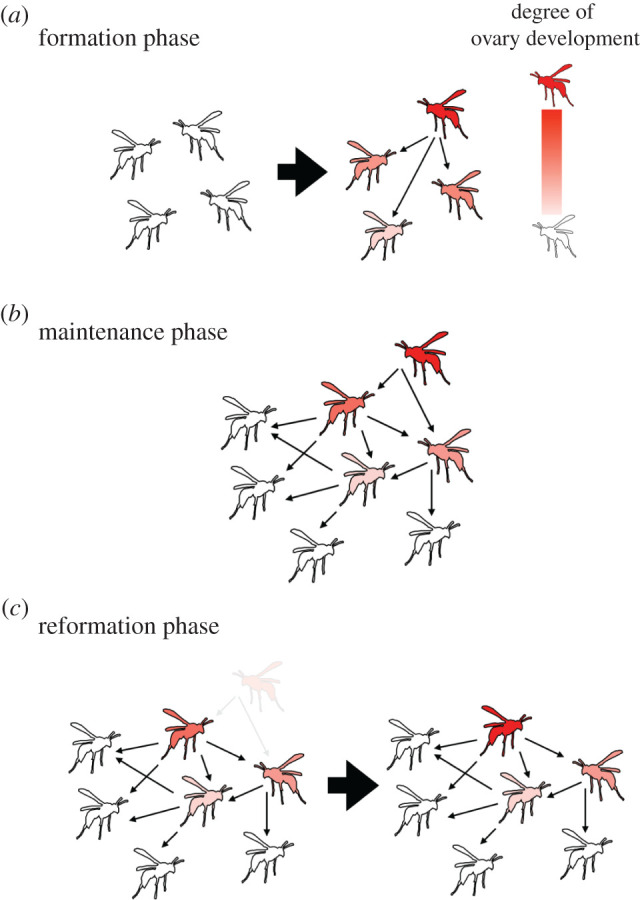Figure 1.

Typical formation of dominance hierarchies at three phases in the life cycle of a colony of eusocial insects. (a) Formation phase: foundresses compete for top ranking in the hierarchy. The resulting one dominant individual can take over reproduction as a ‘reproductive’ (R) and the others engage in non-reproductive roles as ‘NRs’ in the colony. (b) Maintenance phase: in addition to the R, dominant NRs perform dominance behaviours, leading to a stable hierarchical structure that allows the highest individual to maintain the R position. (c) Reformation phase: after the R is lost from the colony, the remaining dominant NRs compete and one NR takes over the top-ranked position in the hierarchy. The reconstructed hierarchy will move into maintenance phase again. The red colour scale indicates reproductive ability, with red indicating full development of ovaries and white indicating non-development. Arrows point from actors to recipients of dominance behaviours. (Online version in colour.)
